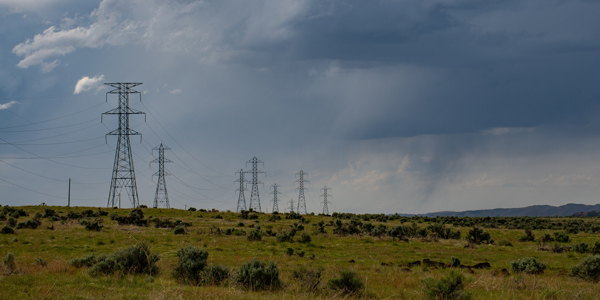By Robert Mullin
CAISO’s Board of Governors on Wednesday approved $141.7 million in transmission spending and reliability-must-run contracts covering three power plants in Central California.
The 2019/20 transmission plan covers nine projects CAISO says are needed to maintain reliability according to NERC and ISO planning standards. Seven of the projects (totaling $120.7 million) will be located in Pacific Gas and Electric’s service territory, one ($16 million) in Southern California Edison and another ($5 million) in the Valley Electric Association/GridLiance West area straddling the California-Nevada border.
In his presentation to the board, CAISO Vice President of Infrastructure Development Neil Millar characterized the plan as a “modest” capital program and pointed out that all the projects are reliability-driven.
“We did not identify the need for any policy-driven projects or economic-driven projects in this cycle. The one qualifier was that the economic-driven analysis did identify the benefit of advancing a reliability project, but the driver remains the reliability requirement for that project,” Millar said, referring to the $16 million, 230-kV Pardee-Sylmar line-rating-increase project in SCE’s territory.
Millar said CAISO’s analysis of potential policy-driven projects relied on assumptions gleaned from the California Public Utilities Commission’s 2017/18 integrated resource planning cycle. The CPUC’s IRP reference system plan assumes that California’s electricity sector will cap its annual greenhouse gas emissions at 42 million metric tons by 2030 through a generation portfolio consisting of at least 60% renewables. It includes a “generic” base portfolio concentrated in various parts of the state needed to meet that target (see graphic).
“I’m not an engineer, but as a matter of common sense, can you explain how we can go from a 33% to 60% renewable system” without spending on new policy projects? Governor Ashutosh Bhagwat asked.
Millar responded that, in past years, utilities developed renewable portfolios under the expectation that the resources must be deliverable as resource adequacy under CPUC rules. But those portfolios have “started to shift” where some of the output can be energy-only, he said.
“So with the upgrades that were already put in place, we saw that we had considerable capability to take advantage of filling out those areas where developments had already taken place, as well as capacity to meet energy-only requirements where resources would be providing energy and not necessarily resource adequacy capacity,” Millar said.
The scope of the past transmission buildout accounts for the lack of policy-driven needs today, he said.
But Millar pointed to one “qualifier.”
“When you move to these higher [renewable] goals, we’re also seeing a steady escalation in the amount of transmission-related curtailments that’s showing up in the model, and unless there’s a policy requirement to address that curtailment, that would transition over to being an economic requirement,” he said. “Those could drive considerable transmission to address economic-driven transmission needs.”
The board additionally approved CAISO management’s recommendation to put three previously approved projects on hold for further review. The projects are all located in PG&E’s territory and include the North of Mesa upgrades, the 115-kV Morage-Sobrante line reconductoring and the Wheeler Ridge Junction substation project.
Not a Trend — Yet
The board also approved the designation of three Central California power plants as RMR resources for the summer peak season. The approvals are conditional because they will be revoked for any resource that obtains a resource adequacy contract by that time. The facilities include:
- Starwood Energy Group’s Greenleaf II Cogen, which is required to help meet the 734-MW local capacity requirement (LCR) for the Drum-Rio Oso subarea within the Sierra local area. The 49.5-MW unit is not currently active in the CAISO market following termination of its Public Utility Regulatory Policies Act contract and is going through a qualifying facilities conversion process to become an ISO participating generator. The 230/115-kV Rio Oso transformer replacement project, which will mitigate the subarea’s reliability need, is not scheduled to be in service until June 2022.
- California State University Channel Islands’ Channel Islands Power, which is required to help meet the 288-MW LCR requirement in the Santa Clara subarea of the Big Creek/Ventura local area. The 27.5-MW unit is currently under a resource adequacy contract set to expire on March 30. While 195 MW of new energy storage resources have been procured to meet the expected LCR shortfall in the subarea, they won’t become available until June 2021.
- Atlantic Power’s E.F. Oxnard, which is also needed for the Santa Clara subarea. The 48.5-MW plant is currently under a resource adequacy contract that expires May 24. The unit will need to convert from a QF participant arrangement to a conventional market participant arrangement.
Governor Severin Borenstein noted that last year saw just one CAISO unit secure an RMR designation for the summer.
“Are we seeing an increase, or should I not think this is a trend?” Borenstein asked.
“From a local capacity perspective, we wouldn’t expect to see this being indicative of a trend,” Millar said. “Two of these units are qualifying facilities as opposed to being conventional market participants, and there’s a relatively small number of those. The other issue we’re dealing with is that we do have reinforcement projects under way generally to backfill for a number of these items, so there are individual cases that we’re going to have to deal with from a local perspective. So we don’t see this as a trend — at least yet.”
CAISO CEO Steve Berberich interjected: “I think the operative word being used is ‘yet.’ With the fragmentation of the load-serving entities in California, we expect that this could very well be the case. I agree with Neil that this doesn’t necessarily indicate a trend, but we’re going to continue to be vigilant about this issue.”





